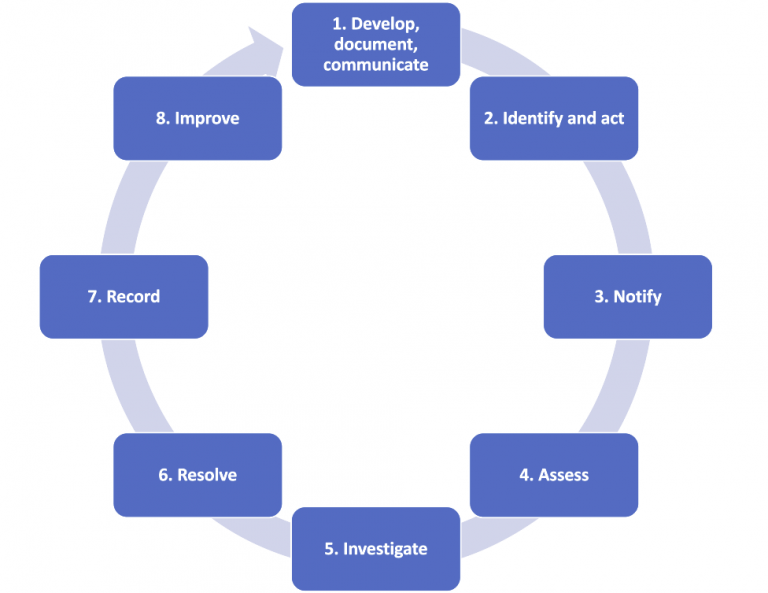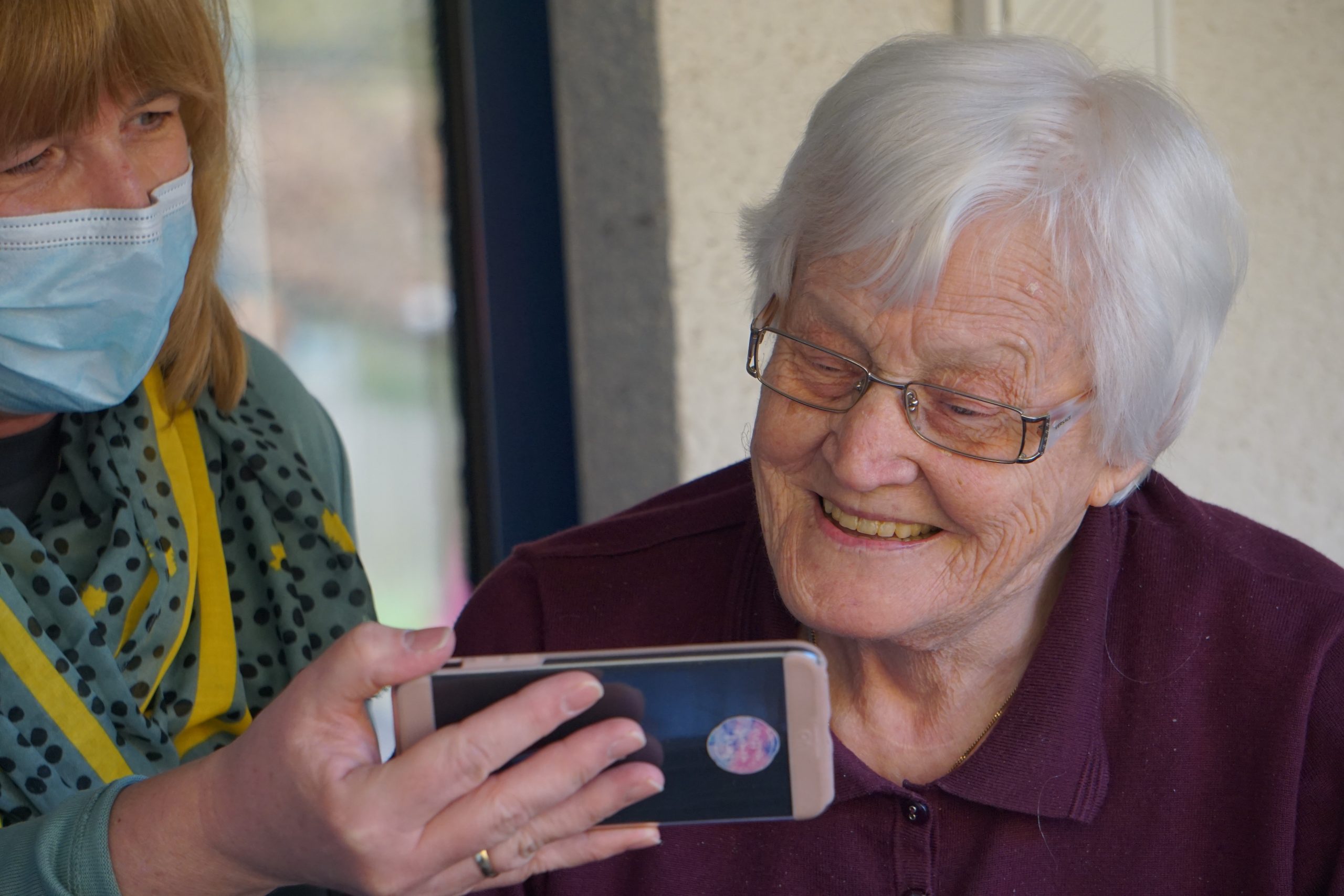Incident management in Aged Care now aligned with NDIS
With the recent updates to the aged care Serious Incident Response Scheme (SIRS), including a new indicator being added to the Aged Care Quality Standards, the requirements for incident management in aged care have become more closely aligned with those under the NDIS Practice Standards.
Given these developments, we thought it would be timely to take a look at what a best practice incident management system looks like.
So, what does “incident management” involve?
The overall goal of an incident management system is to reduce the risk of harm to clients, workers and the community. Incident management is an ongoing process that needs to be integrated into your quality improvement processes. It begins with documenting and communicating your approach; requires that all workers follow a consistent process to respond to and resolve the incident; and concludes with a review, learning and improvement process, to minimise the likelihood of the incident re-occurring.

Documenting the process
To ensure that all workers know what to do when it comes to incidents, your incident management system should be clearly documented, with policies and procedures that are easily accessible to the workforce.
Communication and training
It is important that workers receive training related to incidents, so that they understand the organisation’s incident management procedures, and how to respond if they witness or hear about an incident.
The training should be included in your induction processes, as well as on an ongoing basis. Workers need to know how to identify incidents, even low-risk incidents, so that they are able to respond to the incident accordingly. And they should understand the procedures to follow, and which staff members to inform, immediately after an incident occurs.
You should have a clear definition of which occurrences (including acts and omissions) constitute an incident. This will help to streamline your response to incidents, ensuring that all incidents that occur in connection with service delivery are quickly identified and resolved.
You should also have a priority rating system for incidents. This will help to categorise the severity of each incident and respond accordingly. The Aged Care Serious Incident Response Scheme (SIRS), for example, has an in-built priority system where incidents are given a rating of Priority 1 or Priority 2 depending on their severity.
Managing an incident
Identification and response
Immediately following an incident, the primary goal is to ensure the safety of the client and the community. For serious incidents it may be necessary to contact emergency services.
Even minor incidents must still be treated seriously, and be responded to in accordance with the organisation’s incident management processes. Minor incidents can have serious implications for clients and the organisation’s processes.
Notification procedures
After an incident occurs, workers should notify senior management of its occurrence, so that senior management can determine what the next steps should be. This may include notifying families/guardians/advocates of the incident as a first step.
Aged care, disability and/or child services providers are required to notify the relevant government entity of serious incidents which have occurred in connection with service delivery.
For both aged care and disability providers, it is a requirement that a staff member within the organisation has the designated responsibility of notifying the relevant Commission within a particular timeframe, in an approved format.
Assessment and investigation
Following an incident, the organisation should ensure that the incident is assessed to understand its severity and determine whether a formal internal investigation is required.
If the incident is serious, the organisation should conduct a formal investigation to determine:
- The cause of the incident,
- The effect of the incident,
- Any organisational processes that contributed to or did not function in preventing the incident,
- Changes the organisation can make to prevent further incidents from occurring,
- What, if any, remedial action must be undertaken to prevent or minimise future incidents, and
- The effectiveness of the organisation’s incident management system in relation to the incident.
Supporting those affected
The organisation must support the people involved in the incident, whether they are a client, a worker or a community member. This may include reassuring clients, providing access to professional counselling or trauma services, or changes to services.
Keeping people affected by an incident informed of the response and resolution progress is central to the incident management process. Incidents should be managed in accordance with the principles of open disclosure.
Resolution
In some cases it may be necessary to take remedial action following an incident. Remedial action can range from providing a formal apology to providing financial compensation. You should involve those affected in the resolution of an incident, to ensure that all parties are satisfied with the outcome of the incident management process.
Record-keeping and improvement
Recording
Record-keeping is central to the process of incident management and resolution. Record-keeping is a requirement for aged care, disability and child service providers. Accurate and detailed records are an important part of the continuous improvement aspect of managing incidents.
Continuous Improvement
Each incident is a learning opportunity, and should be viewed as such. During the assessment and investigation stage of each incident, you should examine your processes to determine if any organisational processes failed and are in need of review. You should regularly review your incident register to identify trends, and address processes which may need revision.
The goal: incident prevention
Overall, it is important that workers and organisations understand that the ultimate goal of an incident management system isn’t just to reduce the risk associated with incidents, but to prevent them altogether.
BNG resources
We have quite a number of resources which will help you to develop your incident management processes in line with best practice:
- Policy: Incident Management and Procedures
- Policy: Incident Management Procedures (Aged Care SIRS)
- Policy: Open Disclosure
- Template: Incident Register
- Template: Incident Register (Aged Care SIRS)
- Template: Incident Report Template
- Template: Incident Report Template (Aged Care SIRS)
- Template: Incident Investigation Template
- Template: Incident Investigation Template (Aged Care SIRS)
Additionally, organisations should follow the incident management guidelines of the relevant Commission. For aged care or disability providers, click the links below:
Help with incident management
Looking to refine your incident management system? Log in to SPP to see pur resources in the Reading Room.







